Visiting Cauca CSV
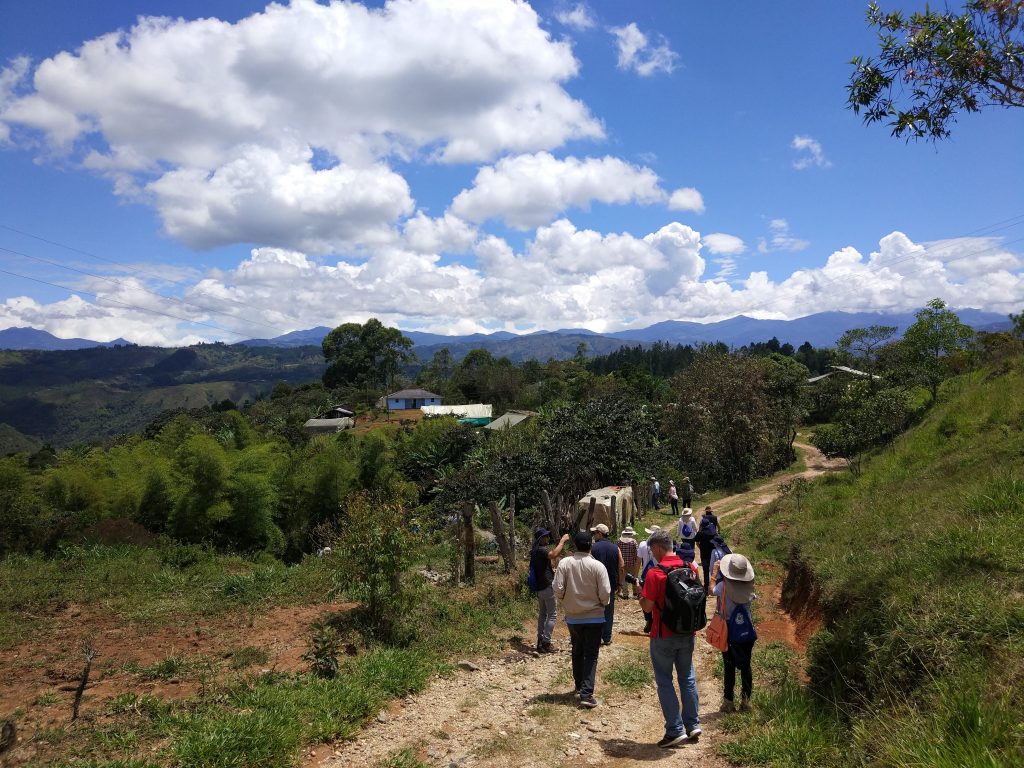
Hello there,
This week was half of it in the office at CIAT and the other half near Popayán (south of Cali). Monday evening I travelled to Popayán city with people from different countries from Central America (Ecuador, Mexico, Costa Rica, Guatemala, Honduras, El Salvador, Nicaragua) and different worldwide institutions such as CYMMIT, IFPRI, World Bank, CIAT, CIP, among different ministries from Central America. They were participating in the “Alineando la ciencia y la acción hacia una agricultura resiliente en América Latina” – Aligning science and action towards resilient agriculture in Latin America.
Tuesday we headed to Cauca CSV sites. The first stop was at “Finca El Retorno” where Doña Waldina and her family prepared a typical Colombian breakfast. There, Luis Alfonso Ortega (Ecohabitats) and Deissy Martínez (CCAFS Latin America) introduced and explained the day.
Luis Alfonso mentioned that vulnerability its a factor to have in mind because the drought has a 60% of the impact and 40% is from the wind. To not be as vulnerable, people are starting to take adaptation measures such as specific pumps, rainwater harvesting, organic garden (hortizontal and also vertical for old people) among others.
Doña Waldina was a teacher. She started to take some adaptation measures since 2015.
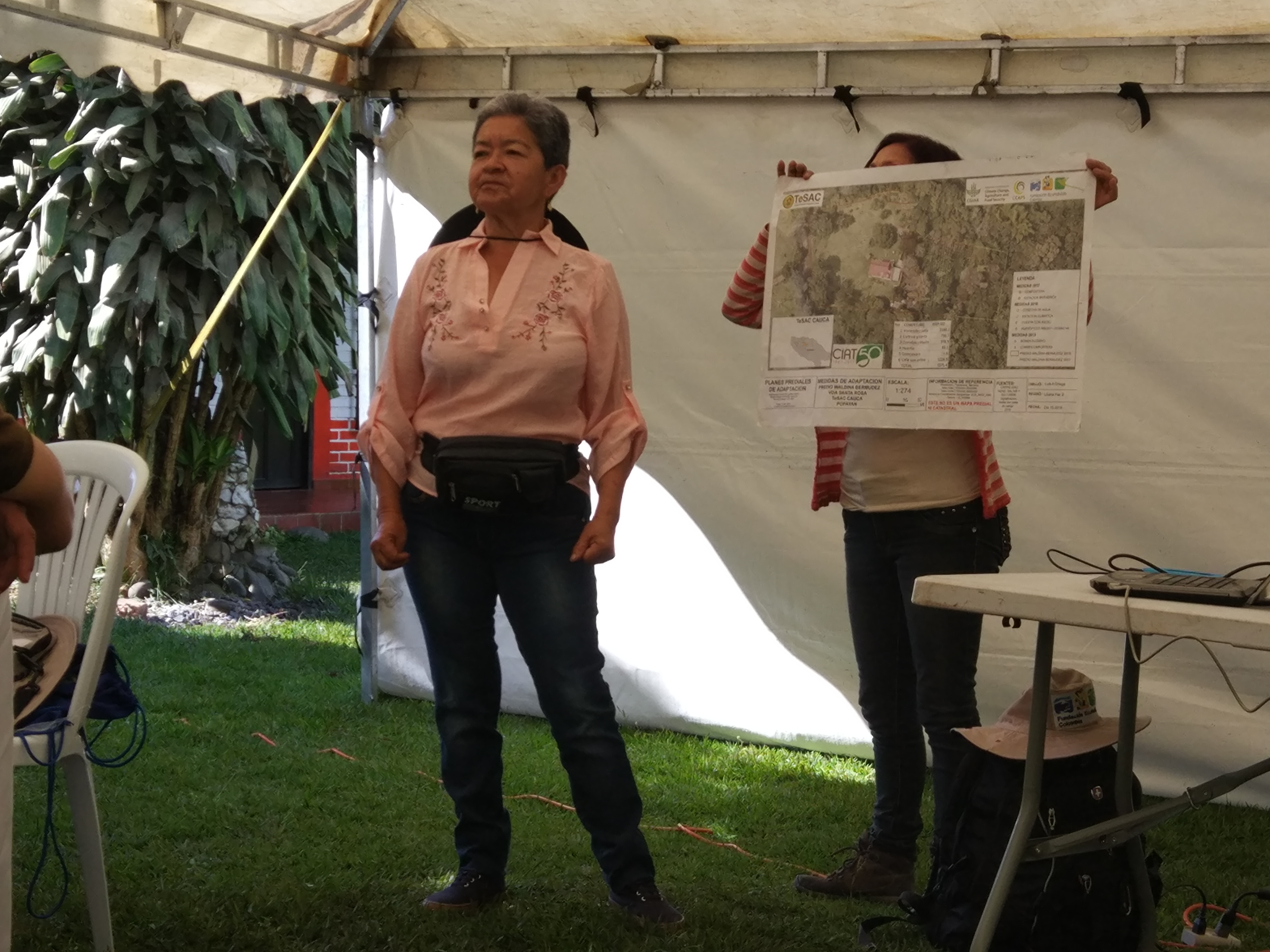
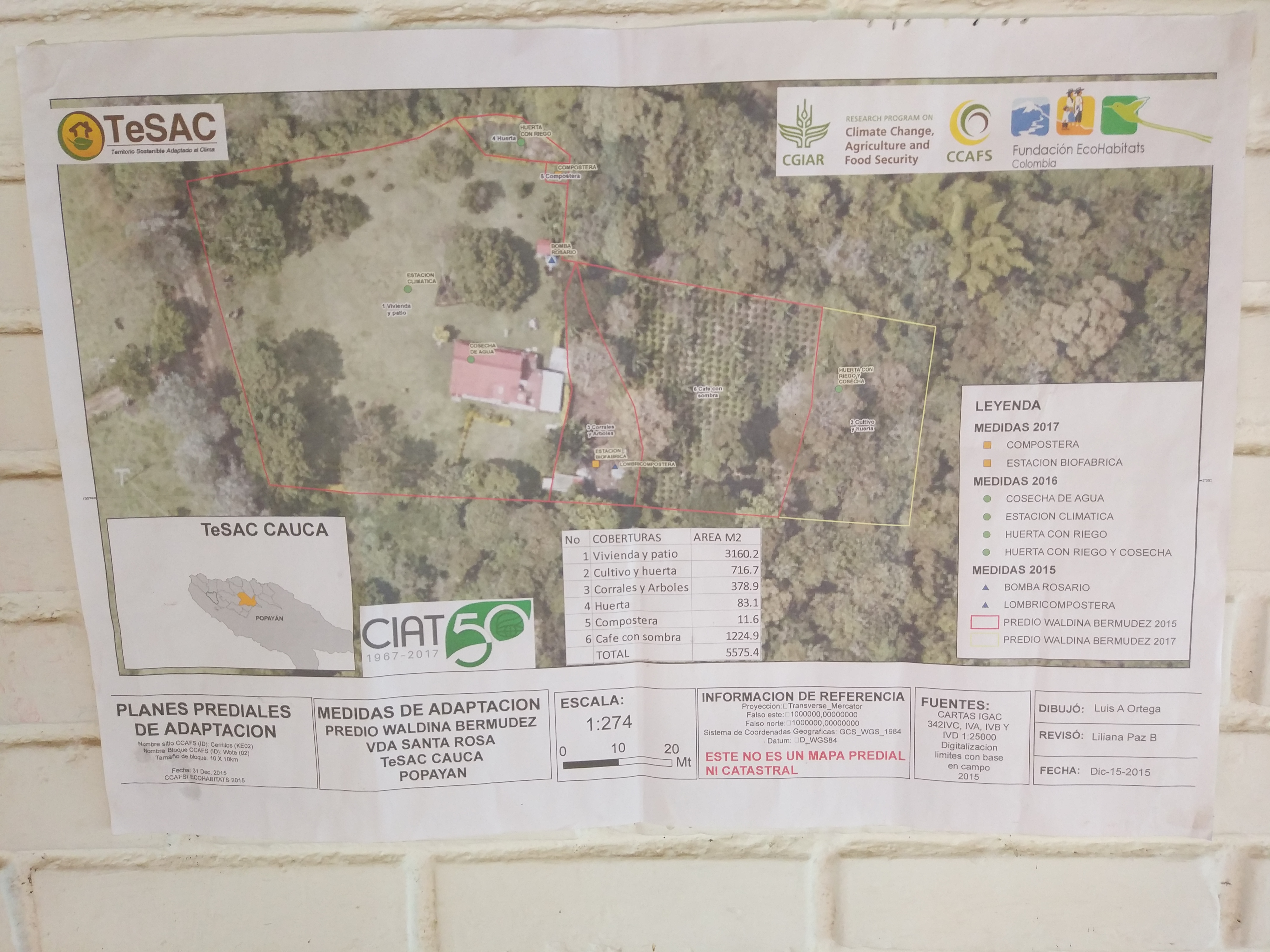
In 2015, she adopted the “rosario” bomb because there was no aqueduct from the city, and she needed water. Also she started to produce her own vermicompost. In 2016, she was harvesting the rainwater and construct the meteorological station. In 2017, she started with the biofactory for the organic fertiliser. And this year, she installed 4 photovoltaic energy panels on her roof.
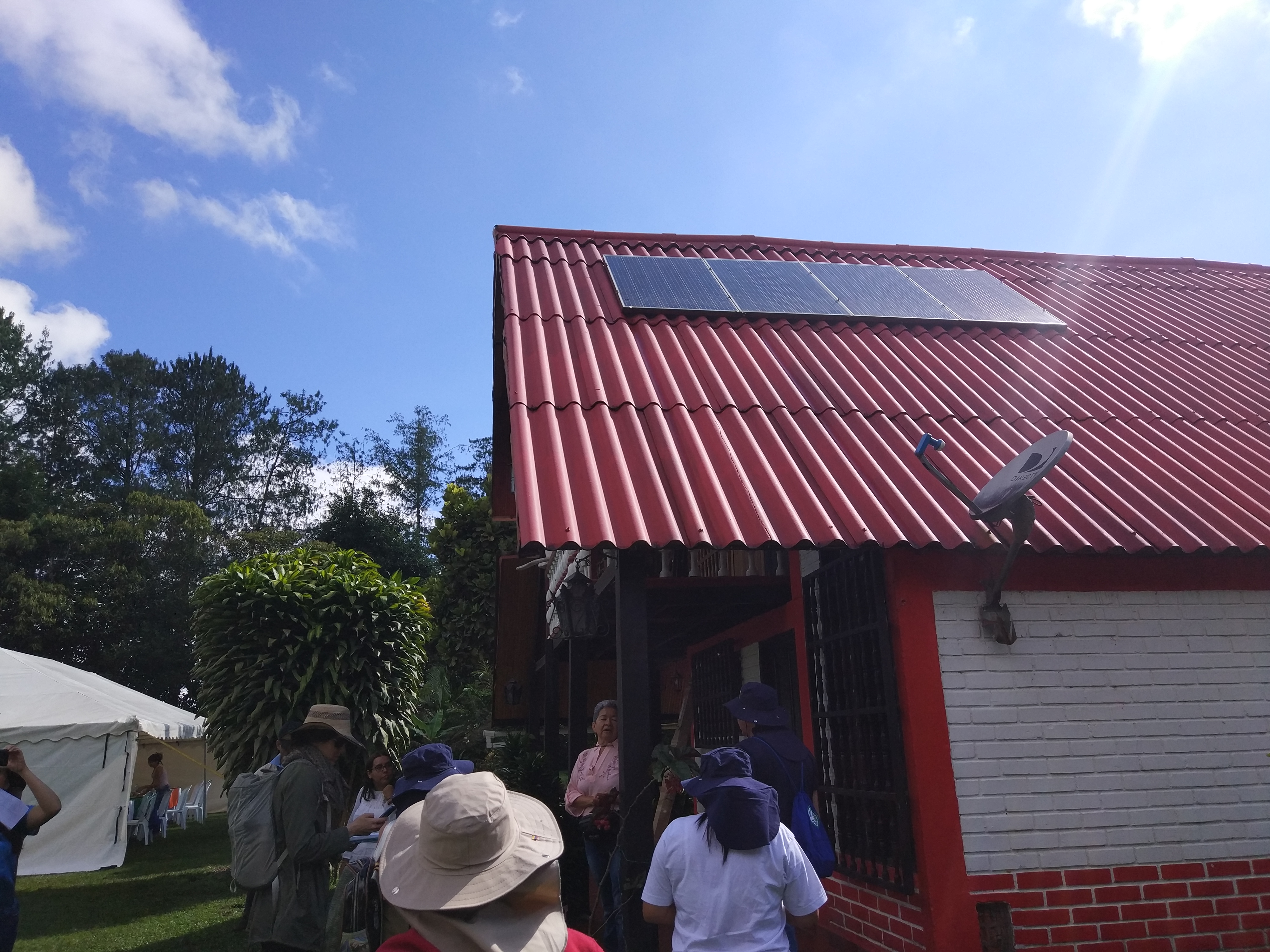
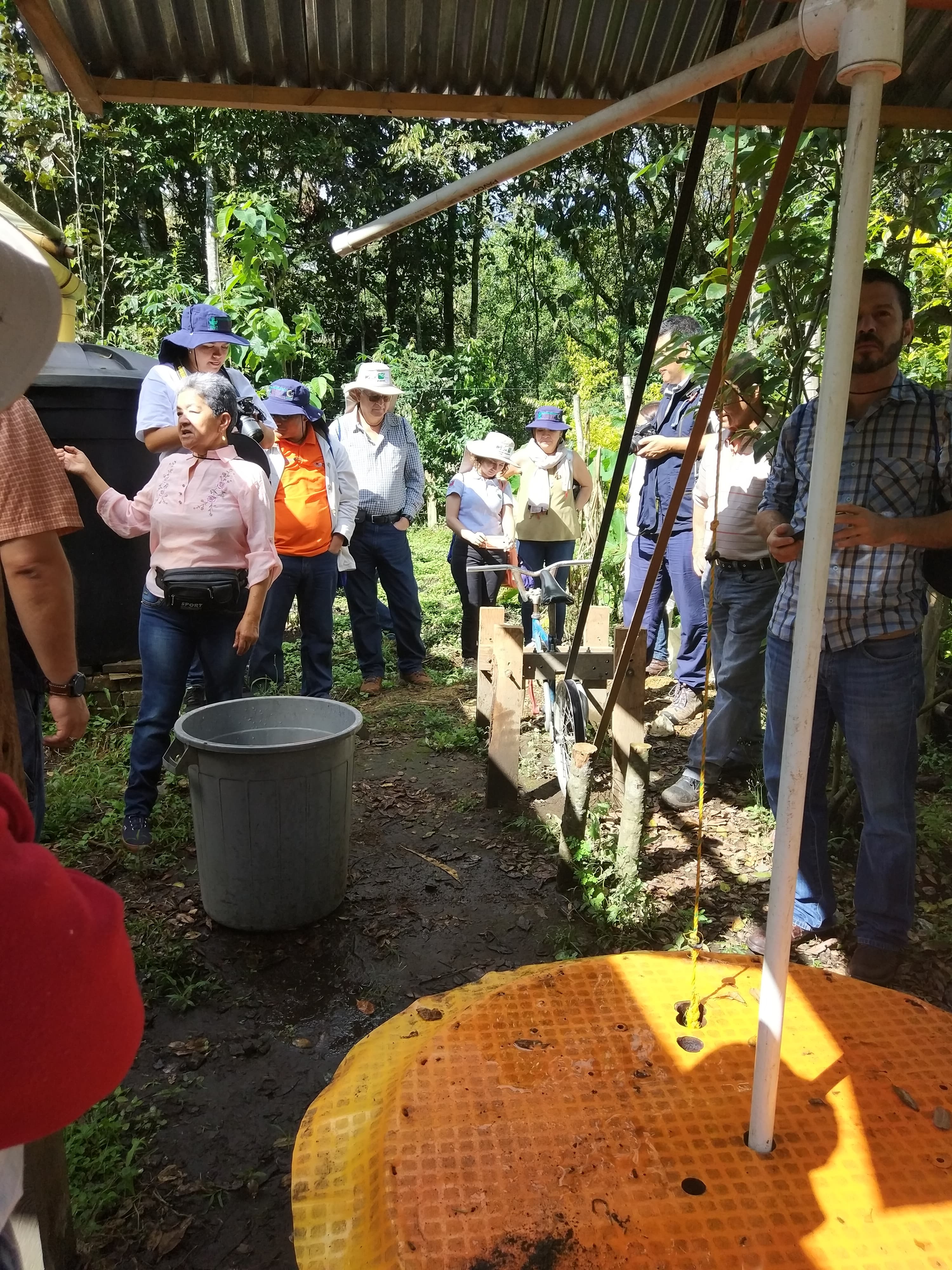
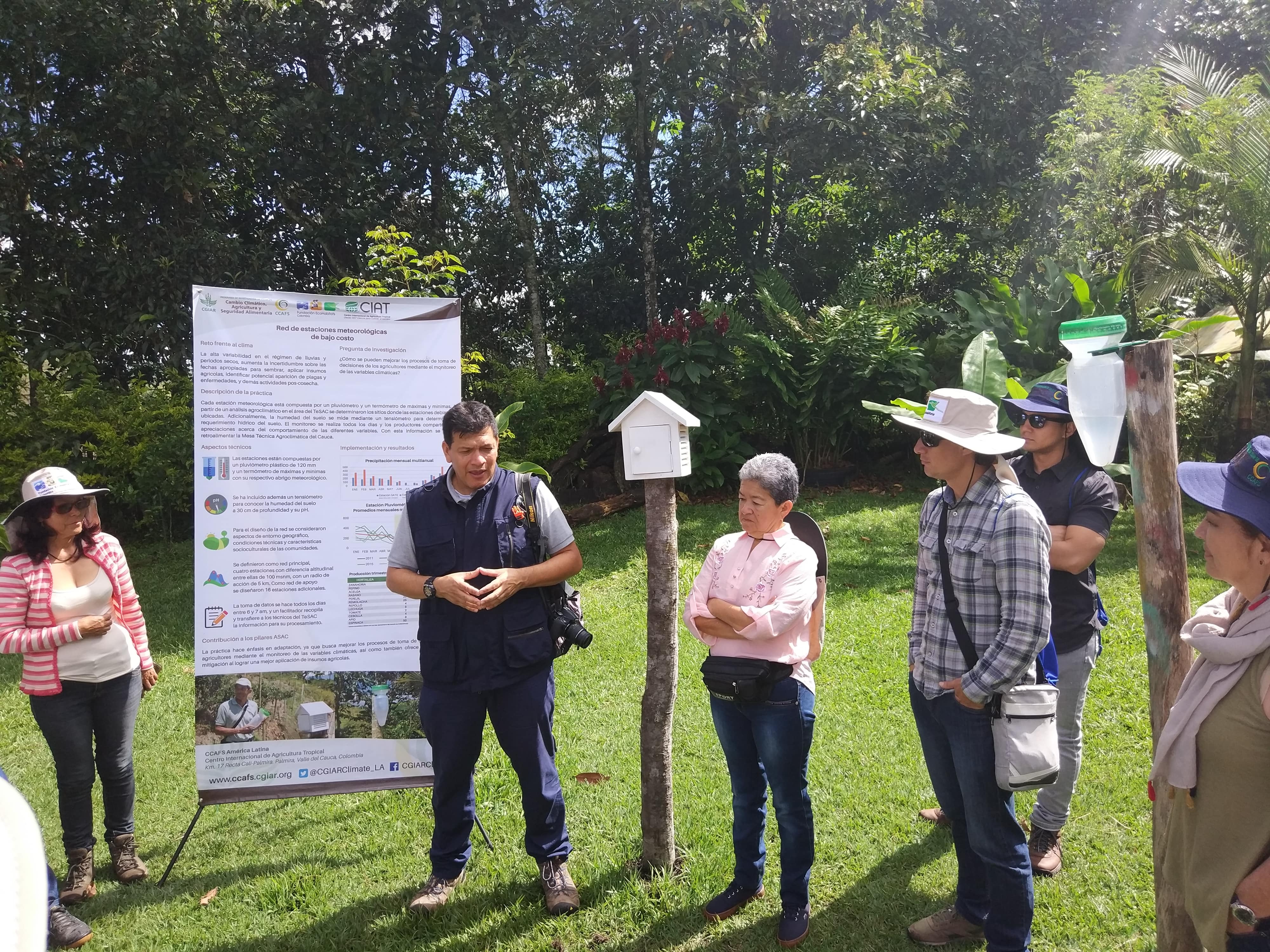
Then, we went to Don David’s and Doña Doris’ place. Don David talked about the sugarcane production, and Doña Doris showed us her organic garden and explained about it.
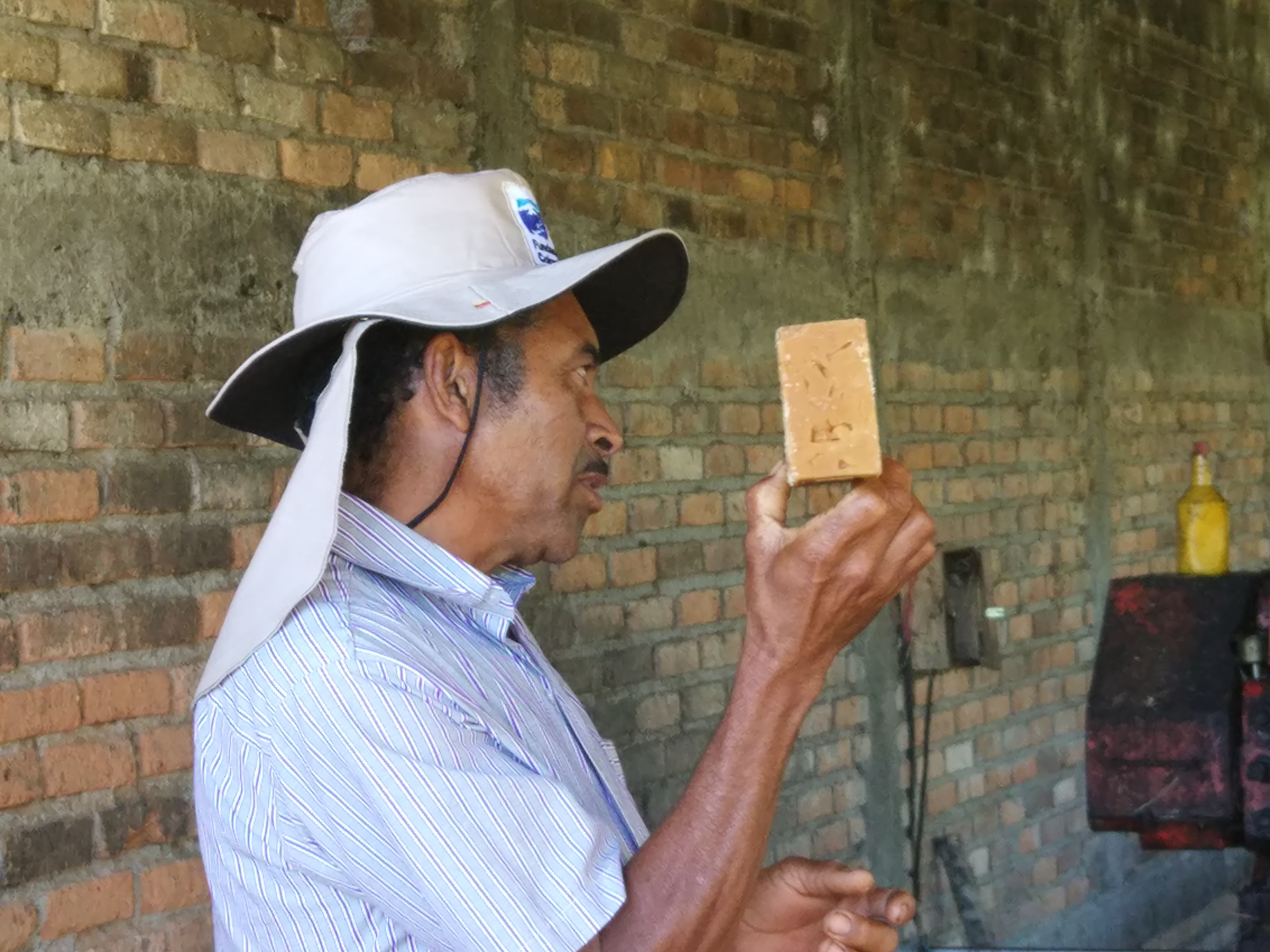
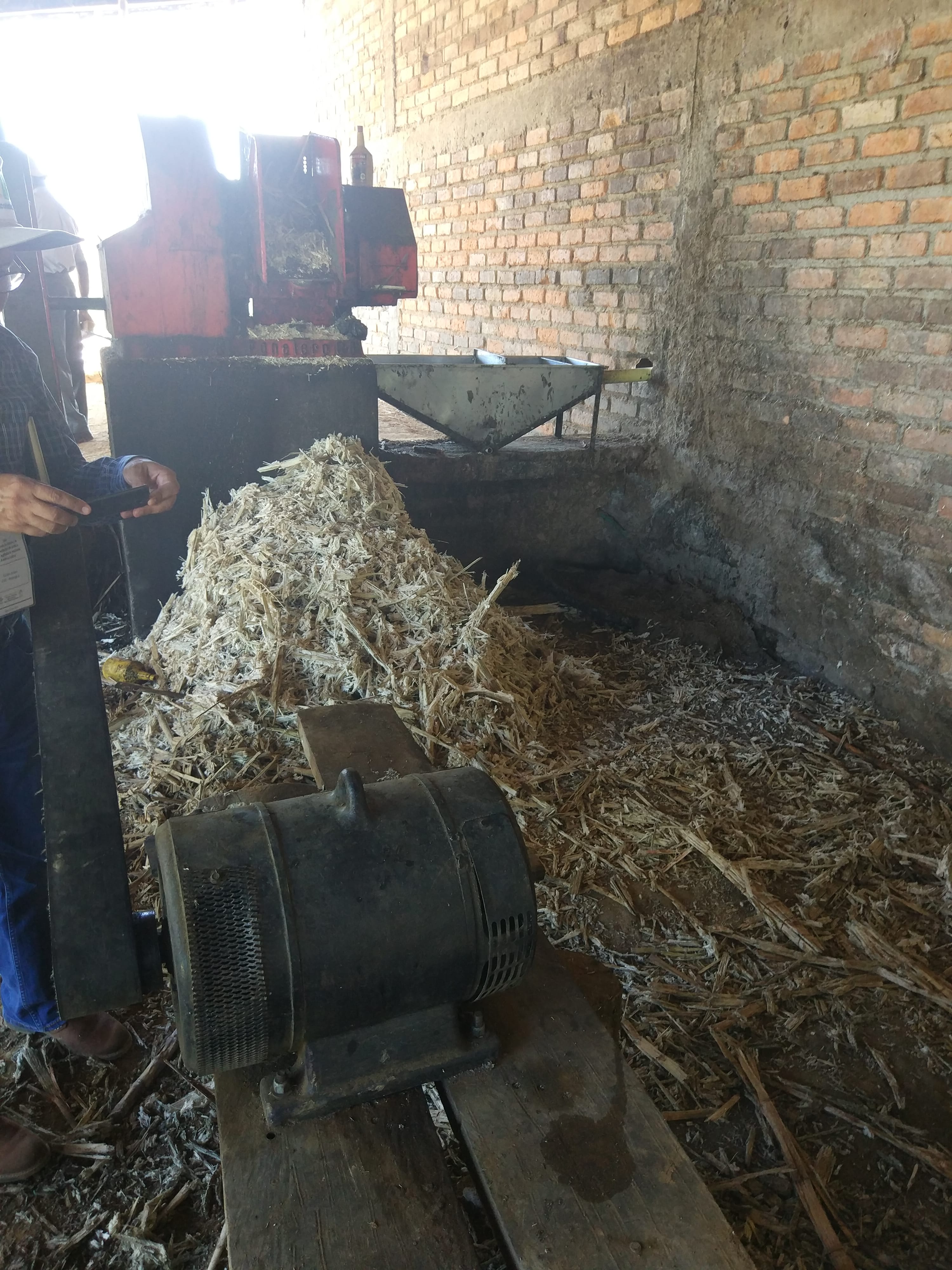
Doña Doris is in charge of the organic garden. At the moment, she is growing coriander, chard, onion, spinach, lettuce, carrot and potatoes.
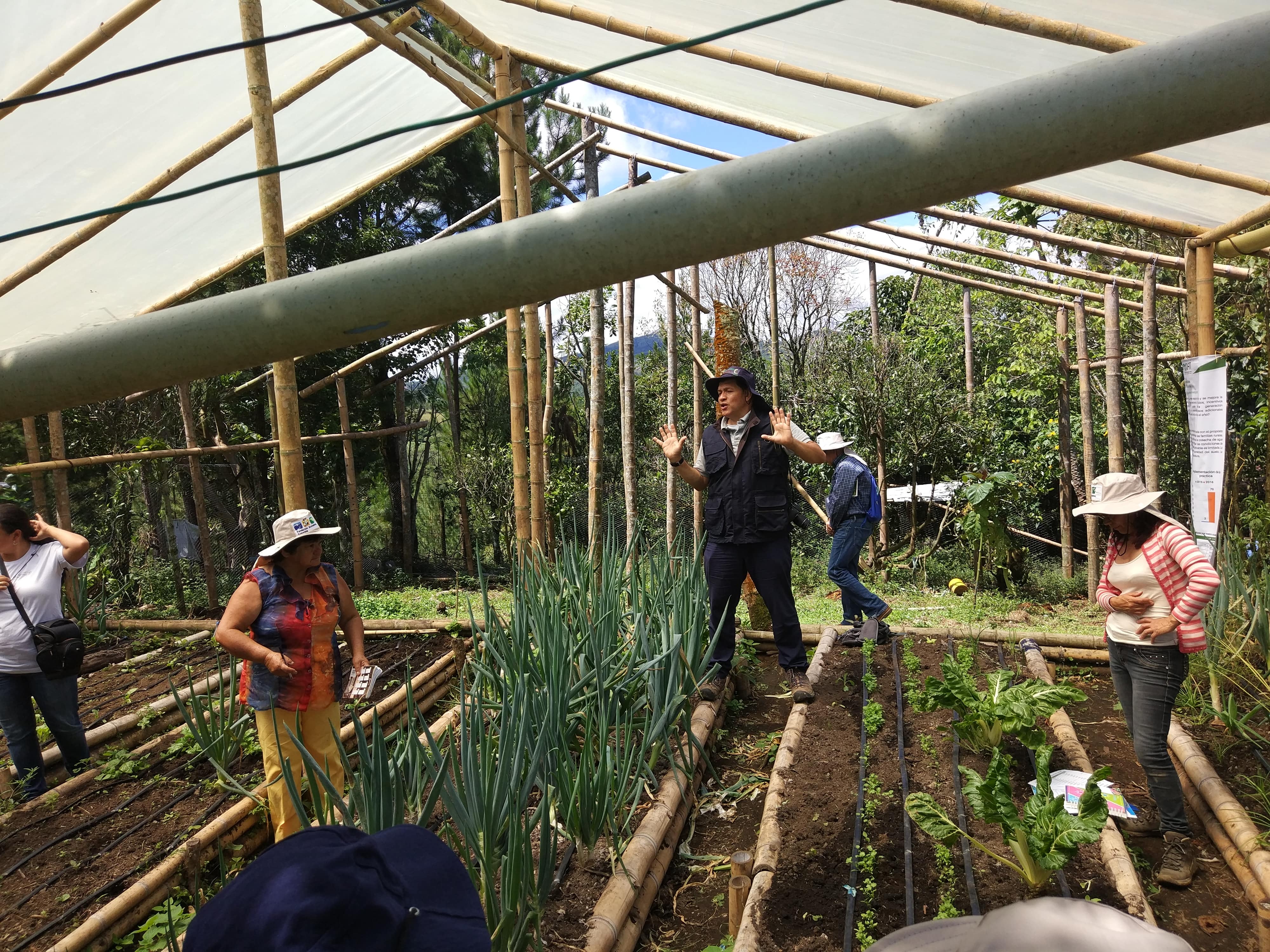
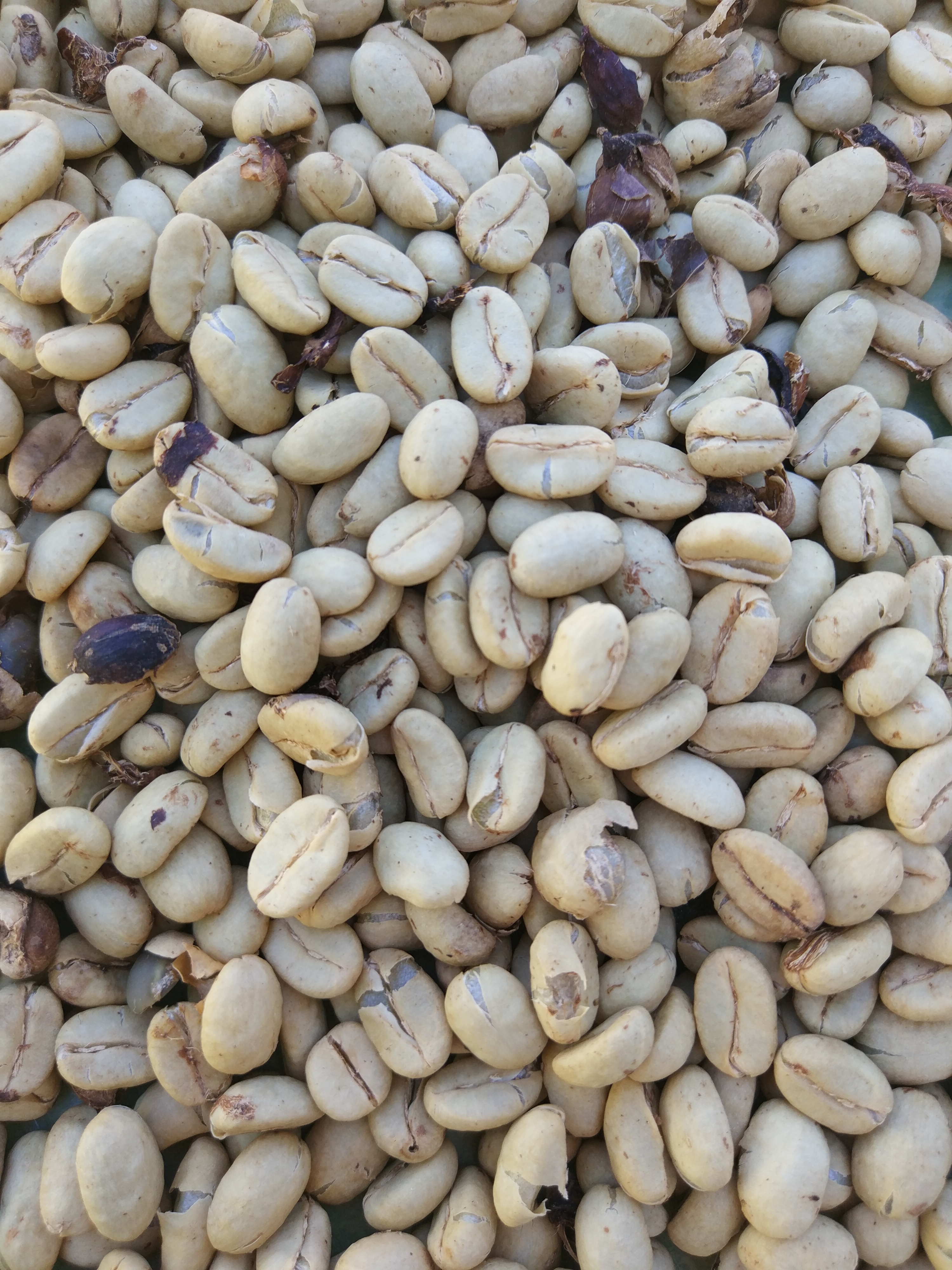
After Don David, we went to see Daniela Campos, a 17 years old girl, that has a tomato production. She is producing organic tomatoes. She has planted 1300 plants staggered at different times in the greenhouse to have production when it is not the season.
The greenhouse has a thermometer that measures maximum and minimum temperatures. TThe greenhouse has blinds to regulate the temperature. Also, it has a rainwater system.
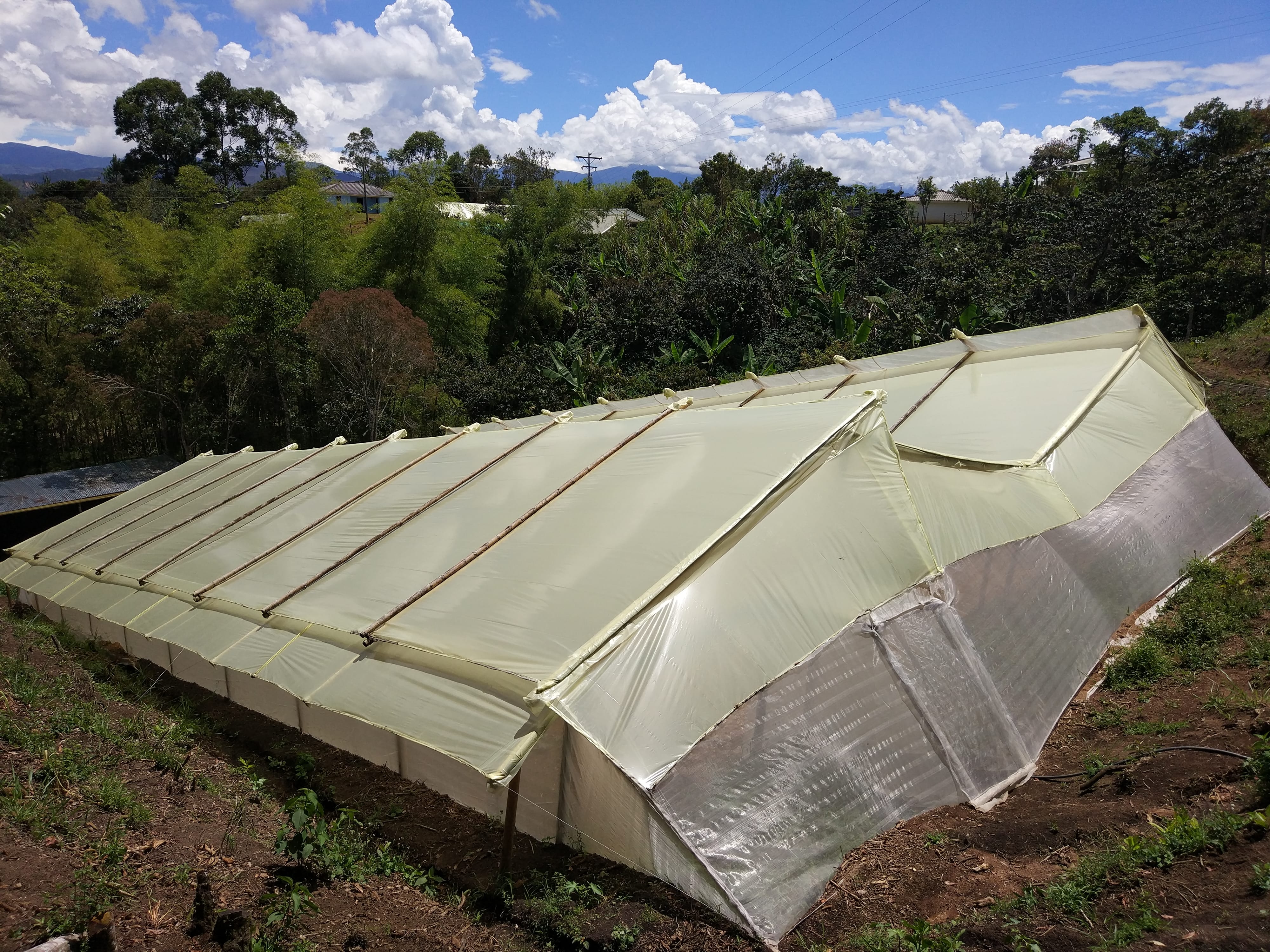
Doña Waldina is the responsible of the biofactory.
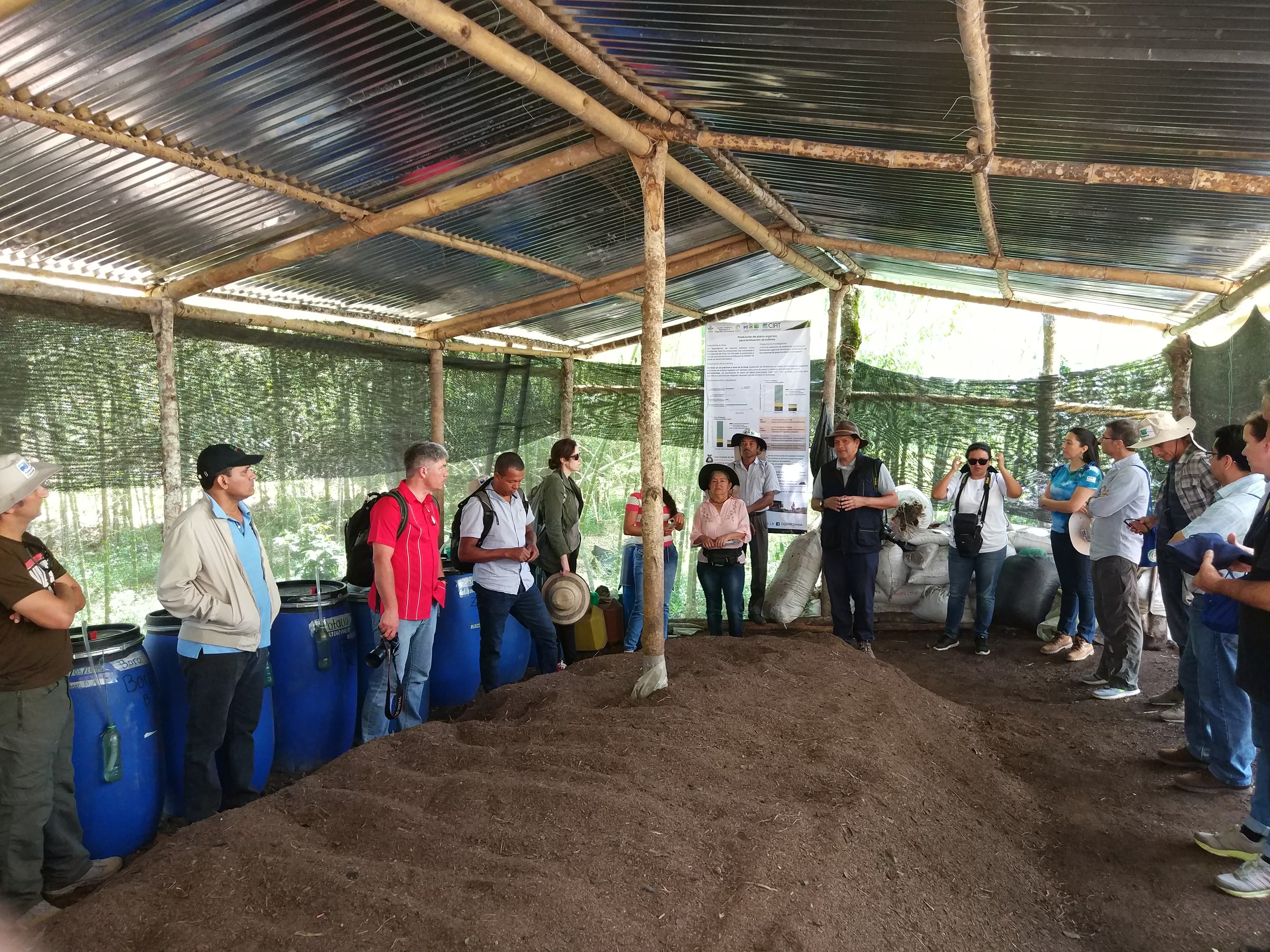
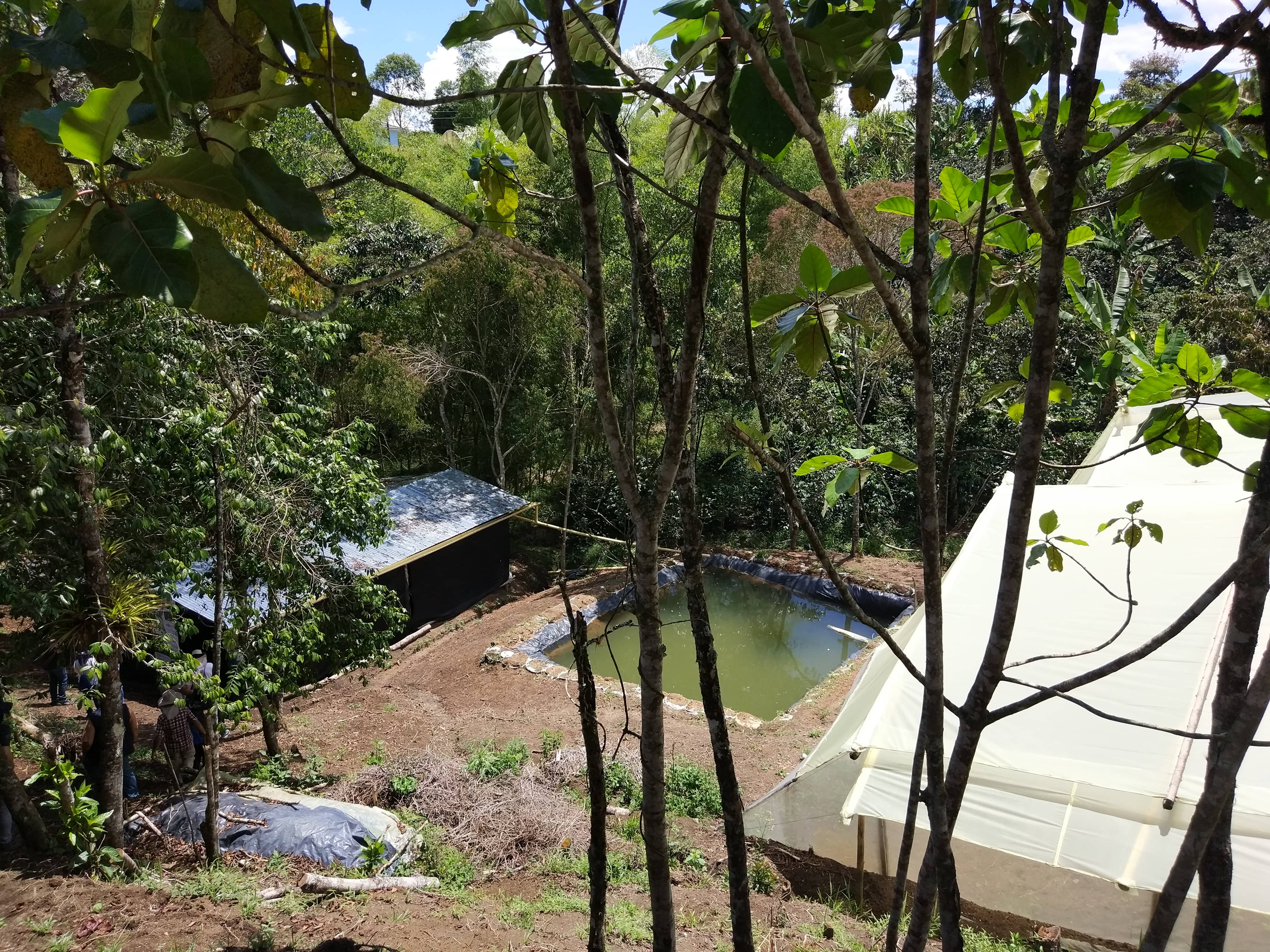
Before lunchtime, we went to visit a playschool where they have an organic garden that are implementing CSA practices.
Adriana is the teacher of the playschool, and she is the one that started with the garden project. The project is also it takes place in primary and secondary school.
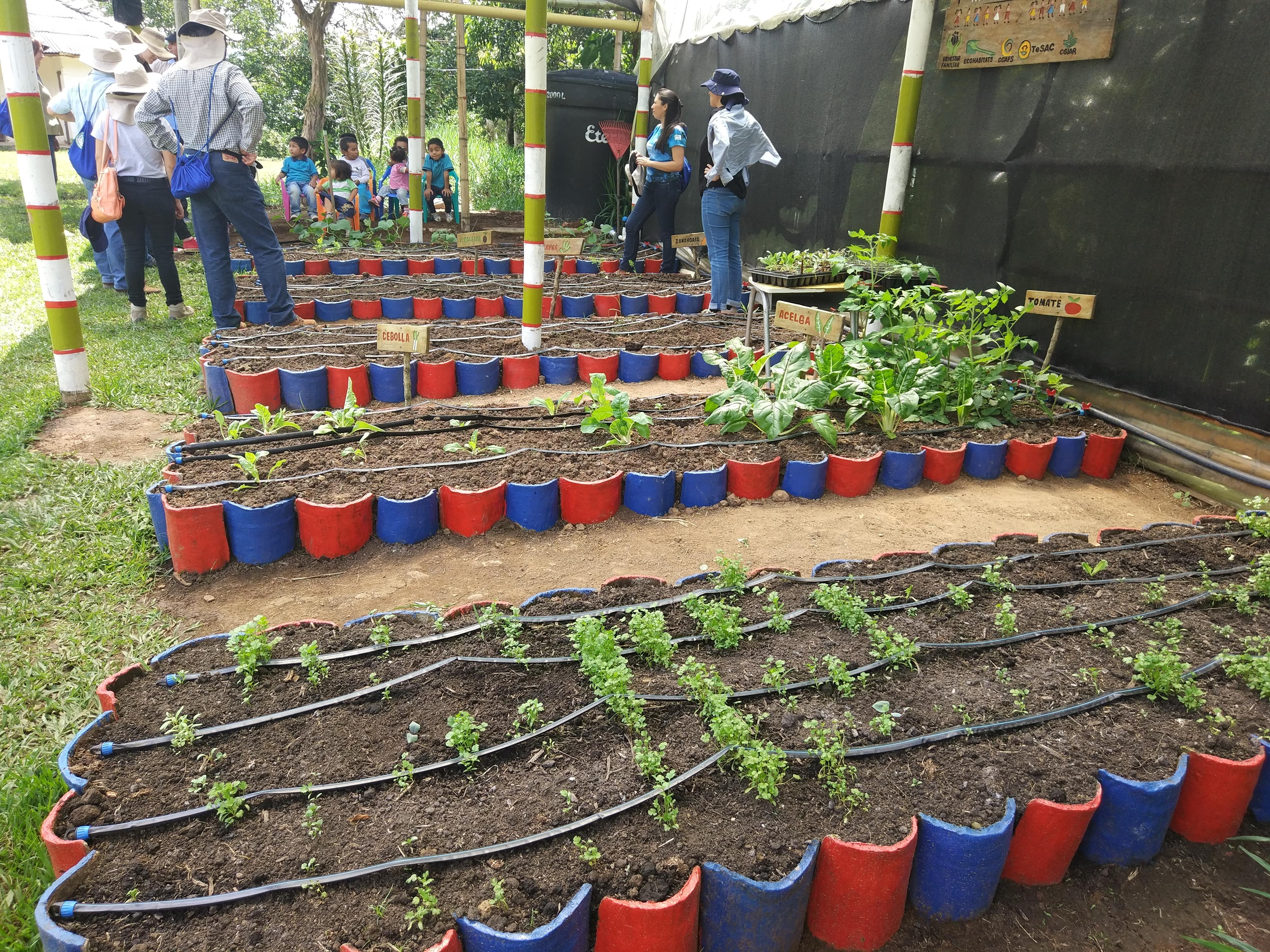
For lunch we had a typical regional dish, “Sancocho”. If you ever come to this region of Colombia, it is a must!
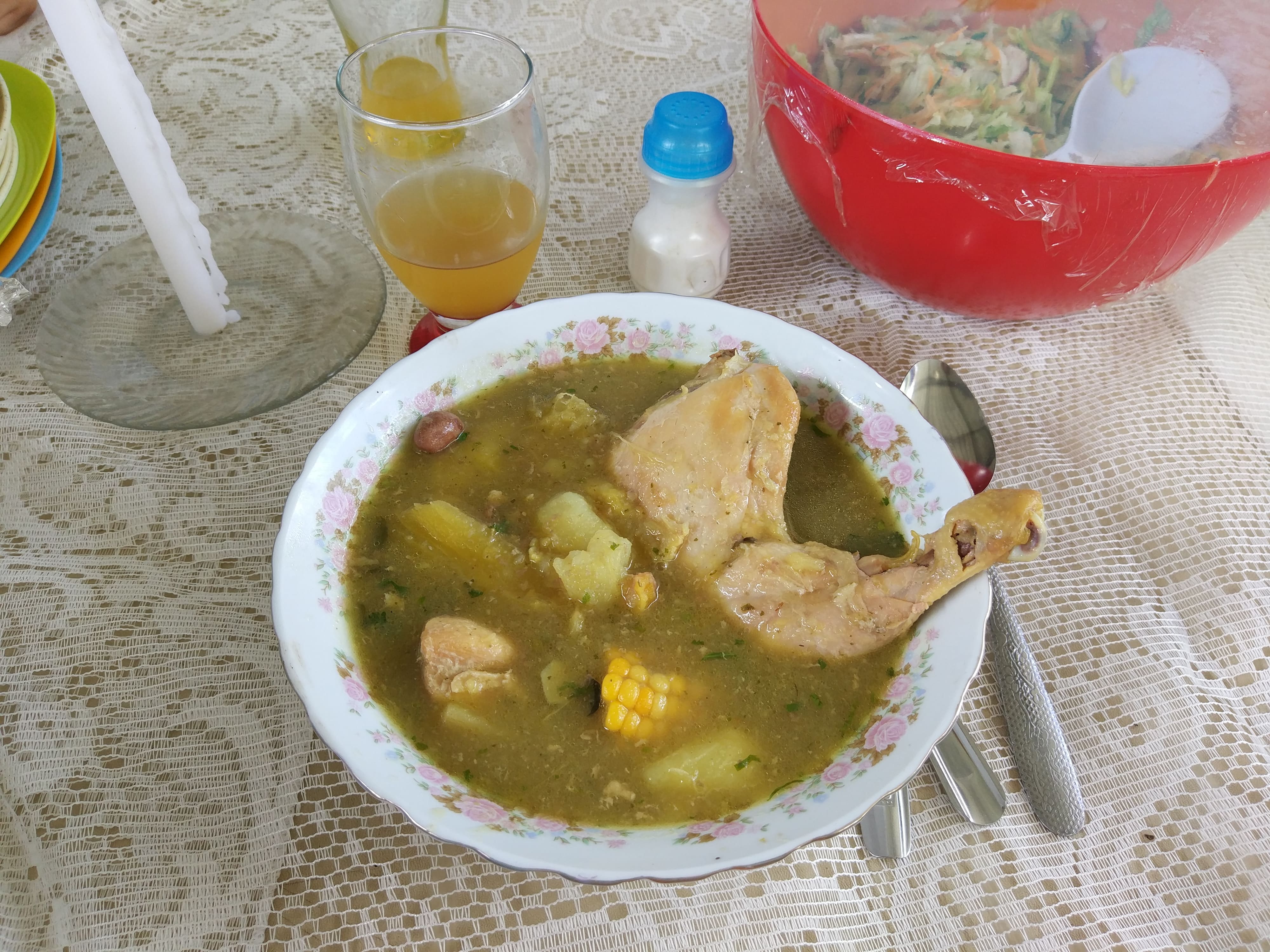
After lunch and to finalise the day Carlos Jara (Consultor CCAFS) gave us a presentation about biofortified beans.
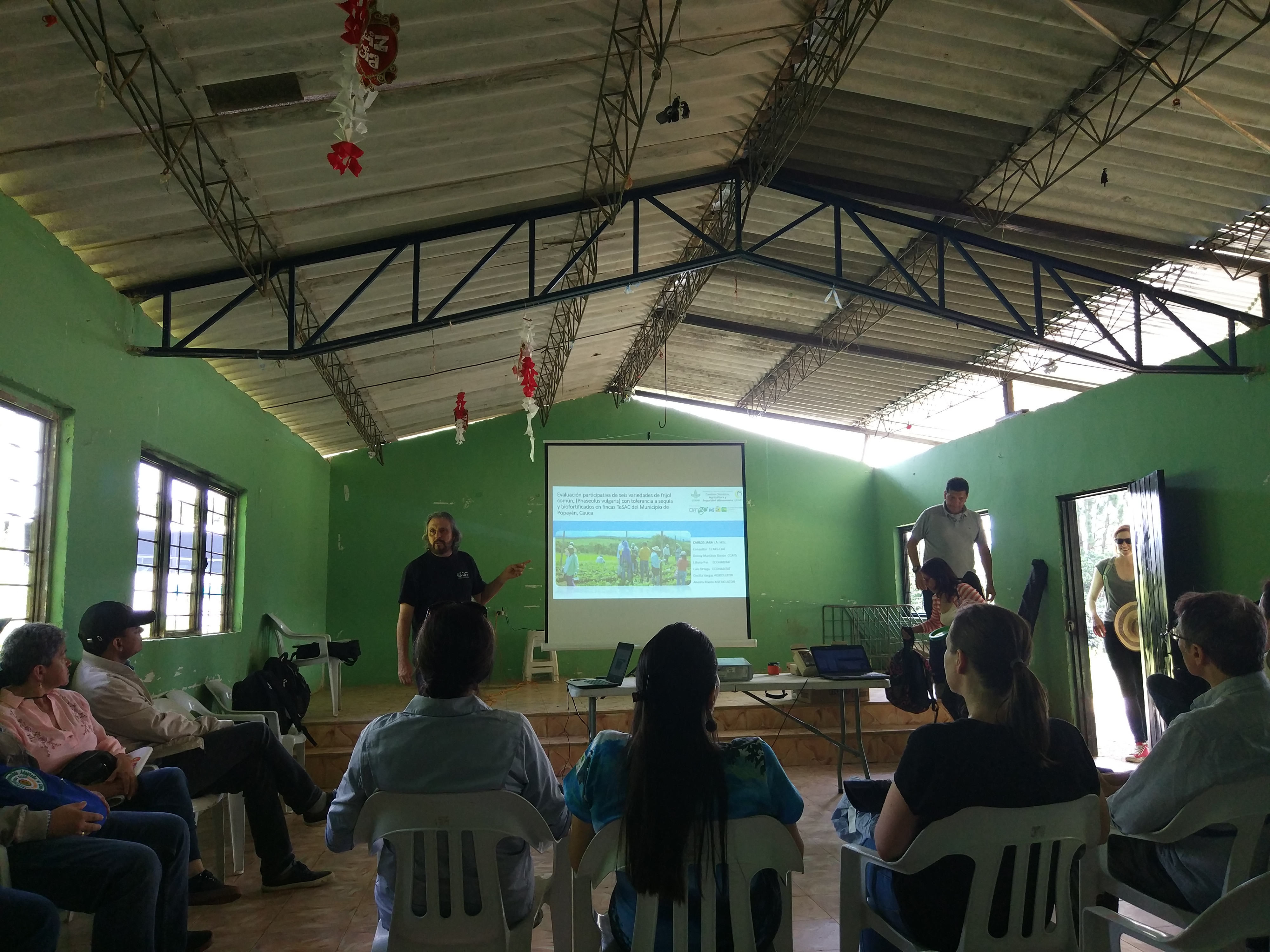
I hope you enjoyed the post, next one it will be about Wednesday’s workshop in Morales – Morro Plano.
Laia